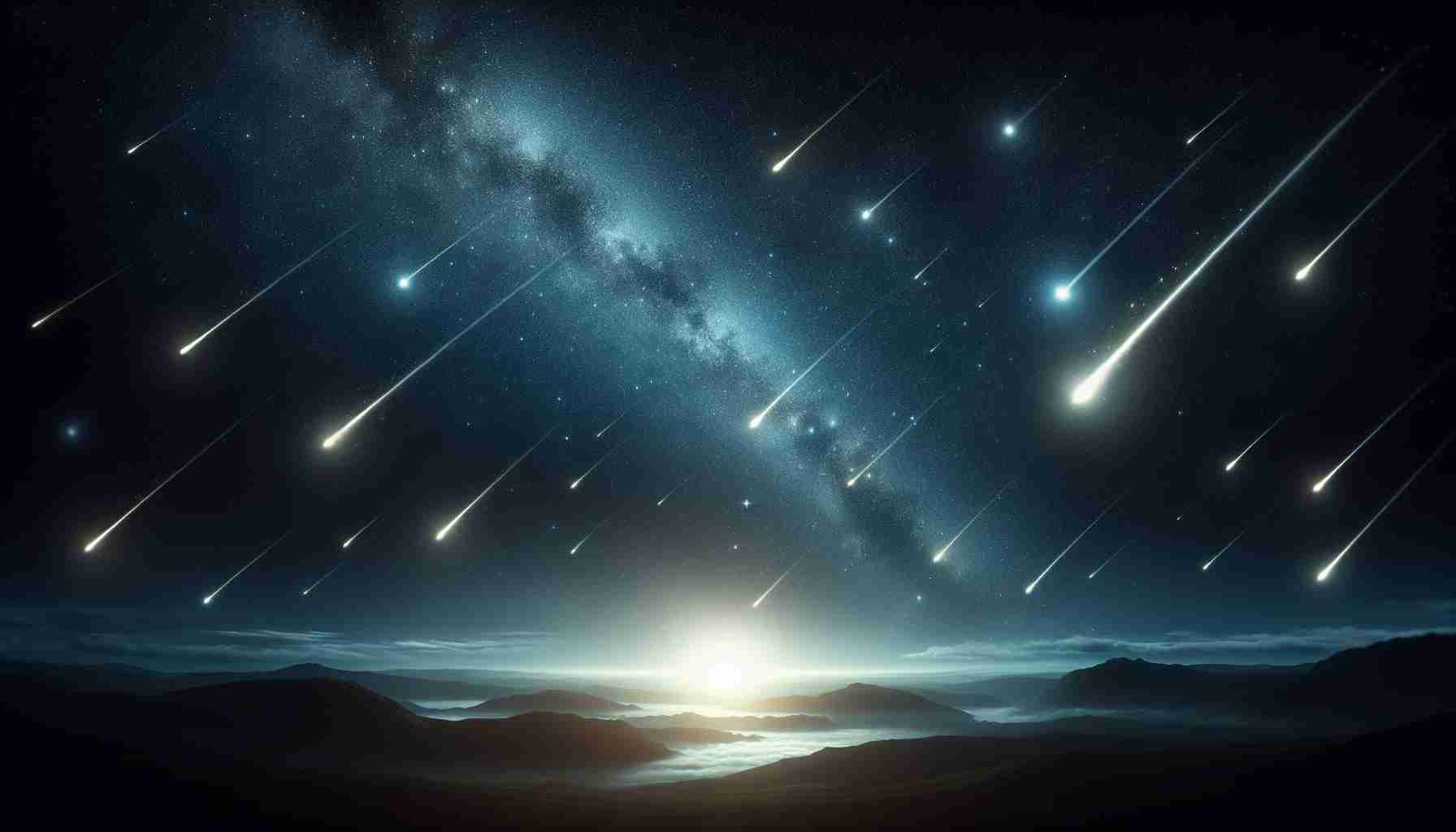
Stargazers should keep an eye on the evening sky to catch the Draconid meteor shower, which will reach its height Monday night into Tuesday morning. Unlike typical meteor showers that are best viewed in the early hours, this event is ideal for evening observers, persisting well after sunset. The presence of a partially illuminated moon will enhance visibility, allowing fainter meteors to be seen clearly.
While the Draconid shower isn’t particularly prolific, enthusiasts can anticipate seeing up to ten meteors each hour. The peak viewing time is expected around 11 p.m. ET. This meteor shower is associated with the debris trail of comet 21P/Giacobini-Zinner, which Earth intersects every October.
This celestial phenomenon derives its name from the constellation Draco, from which the meteors appear to originate. Occasional references to the shower as the Giacobinids honor the comet’s discoverer, who identified it over a century ago. The meteors are slower moving compared to others, offering viewers a longer glimpse of each streak lasting one to two seconds.
While the Draconid shower is known for being relatively mild, the potential for a meteor storm remains. Historical instances in 1933 and 1946 revealed hundreds of meteors per hour, captivating viewers. For optimal viewing, finding a dark location away from urban lights will significantly enhance the experience, making it easier to see these fleeting celestial wonders.
Prepare for the Draconid Meteor Shower This Monday Night
As excitement builds for the Draconid meteor shower peaking this Monday night, it’s essential to delve deeper into the effects, history, and optimal viewing strategies for meteor enthusiasts and casual observers alike. This unique celestial event, with its own sets of challenges and advantages, presents a wonderful opportunity to engage with the night sky.
What Makes the Draconid Meteor Shower Unique?
One of the most significant aspects of the Draconid meteor shower is its association with comet 21P/Giacobini-Zinner. This comet has an orbital period of approximately 6.6 years, which means that the debris it leaves in its wake varies in intensity based on how close the Earth passes to its path. As such, the number of visible meteors can greatly fluctuate year by year. In some years, like 1933 and 1946, observers have reported spectacular storms with thousands of visible meteors, while in other years, the shower is nearly nonexistent.
Key Questions and Their Answers
1. What is the best time to view the Draconid meteor shower?
– The peak viewing period for the Draconids occurs on the night of October 8 to 9, with 11 p.m. ET being particularly favorable for spotting meteors.
2. Where should I go for the best viewing experience?
– Ideally, seek a dark location far from city lights. National parks or rural areas usually provide expansive, unobstructed views of the night sky.
3. What equipment do I need to observe the shower?
– Fortunately, no special equipment is required. A clear, unobstructed view of the sky will suffice. However, a reclining chair or blanket can enhance comfort for longer viewing periods.
Advantages of Watching the Draconids
– Accessibility: Since the Draconids are best viewed in the early evening hours, they are more accessible for families and children compared to other meteor showers that typically peak after midnight.
– Mild Activity: While the number of meteors fluctuates, the overall calm nature of the Draconids allows for a relaxed viewing experience without overwhelming numbers of meteors.
– Historical Significance: Observers can take pride in witnessing a phenomenon that has captivated humanity for centuries, connecting to historical meteor watchings and discoveries.
Challenges and Controversies
– Inconsistency: The unpredictability of this meteor shower can frustrate some observers. With some years producing minimal activity, potential viewers may feel disappointed despite careful planning.
– Light Pollution: Urban light pollution significantly impacts visibility, making it challenging for those in city areas to enjoy the full spectacle of the meteor shower.
– Weather Conditions: Adverse weather conditions, such as clouds or rain, can thwart even the best-laid plans for viewing the Draconid shower.
Conclusion
The Draconid meteor shower offers a captivating spectacle for stargazers this Monday night. By preparing adequately, choosing a dark location, and understanding the nuances of this celestial event, individuals can enhance their chances of witnessing a breathtaking natural phenomenon. With historical records indicating the potential for surprise meteor storms, this year could be one to remember. For more astronomical insights and information, visit NASA’s official site or Space.com.



